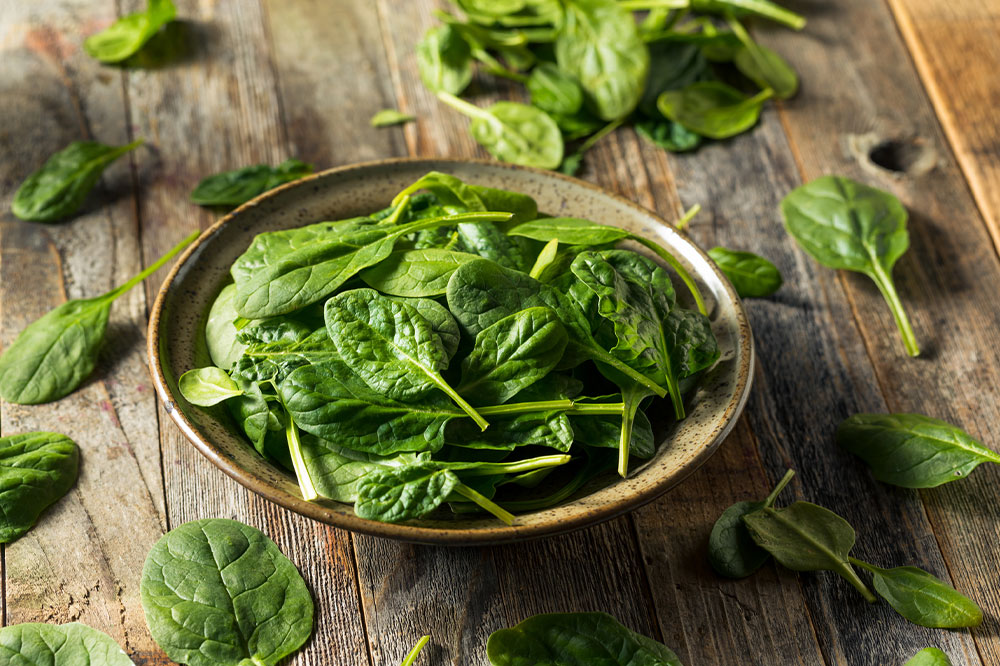Top Foods for Managing Macular Degeneration

Macular degeneration is the leading cause of irreversible vision loss in people over 60. Presently, it affects over 10 million people in the country. As one gets older, the risk of developing the condition increases, and so those over 75 have a nearly 33% risk of being diagnosed with macular degeneration. While the disease does not have a permanent cure, a few treatment options and the following nutrient-rich foods can help one manage the symptoms.
Whole grains, beans, and dairy
Zinc is a vital mineral that helps in the absorption of vitamin A, which aids in melanin production, a pigment that protects the eye. This is why most sight-related issues, such as cataracts or poor night sight, are related to zinc deficiency. Research suggests those with high AMD risk can slow the progression of the disease by adding zinc and some antioxidants to their daily meals. Some great zinc sources are whole grains, dairy products, and beans. Even though one can find zinc supplements in the market, the products might intervene with the body’s ability to absorb copper. So, if one meets their daily zinc requirements via supplements, they opt for copper supplements too. However, before introducing such changes to one’s meal plans, one must discuss them with a nutritionist or a doctor.
Nuts and seeds
Omega-3 fatty acids provide the body with the nourishment to combat inflammation and are great for eye health. A few excellent omega-3 sources are flaxseed, chia seeds, walnuts, flaxseed oil, soybean oil, and canola oil. These foods can help lower bad cholesterol in the body, typically associated with increasing the risk of macular degeneration.
Oranges
Folate is a B vitamin and aids in cell replication. People who have a substantial folate intake show signs of slow eye disease progression. One can meet the body’s folate requirements by choosing foods like peanuts, orange juice, oranges, Brussels Sprouts, black-eyed peas, grains, and spinach. Alternatively, folic acid can also be obtained from fortified foods like masa or cereals.
Fresh vegetables and other antioxidant-rich food
Two of the most crucial antioxidants for eye health are zeaxanthin and lutein. High concentrations of these antioxidants can be found in a healthy macula. Dark green leafy vegetables like silverbeet, kale, and spinach have good zeaxanthin and lutein content. But one can also find smaller amounts of these antioxidants in foods like yellow capsicum, corn, Brussels sprouts, pumpkin, and peas.
Citrus fruits
Also known as ascorbic acid, vitamin C helps build collagen that can strengthen blood vessels in the eyes and other parts of the body. One’s eyes tend to process nutrients faster, so getting adequate vitamin C and other nutrients benefits vision. People with a high macular degeneration risk should get a good amount of vitamin C in their meals. In addition, they must get an adequate amount of nutrients like vitamin E, beta-carotene, and zinc to possibly slow the progression of advanced macular degeneration by approximately 25%. According to the American Optometric Association, such a combination of 40 to 80 mg of zinc along with antioxidants can slow down visual acuity loss by 19%. Some of the best vitamin C sources are citrus fruits, along with fruits like apples, bananas, and peaches. Moreover, fruits also have antioxidant carotenoids.
Low GI foods
The glycaemic index ranks the carbohydrate content in the food as per their impact on blood glucose levels. When choosing foods with high GI carbohydrates, one experiences a sudden spike in blood glucose levels. On the contrary, foods with a low GI reduce the risk of age-related macular degeneration. Some of the best low GI foods are whole grains, vegetables, fruits, whole-grain bread, cereals, and legumes. Studies suggest that opting for low GI foods can lead to lowering the risk of diabetes, obesity, heart disease, and macular degeneration and can lead to low cholesterol levels.
Broccoli and spinach
Vitamin E is an antioxidant that helps combat the damage to the body from environmental exposure, like air pollution and smoke. Studies suggest that 400 international units of vitamin E can slow down AMD progression. One can meet vitamin-E requirements through foods like peanuts, safflower oil, almonds, broccoli, spinach, and hazelnuts, or fortified foods like breakfast cereals.
Sweet potatoes and carrots
Also known as beta carotene, vitamin A is a fat-soluble vitamin that helps keep one’s immune system strong. It also helps in maintaining one’s eye health and organ function. Early studies show beta-carotene is a crucial nutrient that slows down age-related macular degeneration progression. Some of the best vitamin A sources are fortified cereals, squash, carrots, sweet potatoes, dairy products, and leafy greens. In addition, fruits like mangoes and apricots are excellent sources.
Fortified milk
Vitamin D can also help in managing and preventing macular degeneration. Vitamin D offers triple protection against age-related issues due to its anti-inflammatory and antioxidant properties. In addition, it has anti-angiogenic properties that slow down the growth of new blood vessels responsible for wet age-related macular degeneration. One can meet their body’s vitamin D requirements through foods and beverages like orange juice, cereals, and fortified milk.
Spices and herbs
Herbs and spices can add a ton of color, flavor, micronutrients, and texture to the food with minimal fat and calories. Herbs also make meals look and smell delicious. One can add herbs and spices to vegetables, salads, and different meals and can either opt for dried or fresh ingredients. A few herbs and spices that can be great additions to one’s meals are thyme, sage, rosemary, parsley, oregano, basil, and cilantro. Further, orange pepper can also help manage symptoms associated with age-related macular degeneration. The pepper contains carotenoid zeaxanthin, which boosts pigment density in the macula and reduces the risk of developing the eye condition. The pepper also offers more vitamin C content than almost all the colored peppers and about three times more vitamin C than an orange. It is also an excellent vitamin E source.



